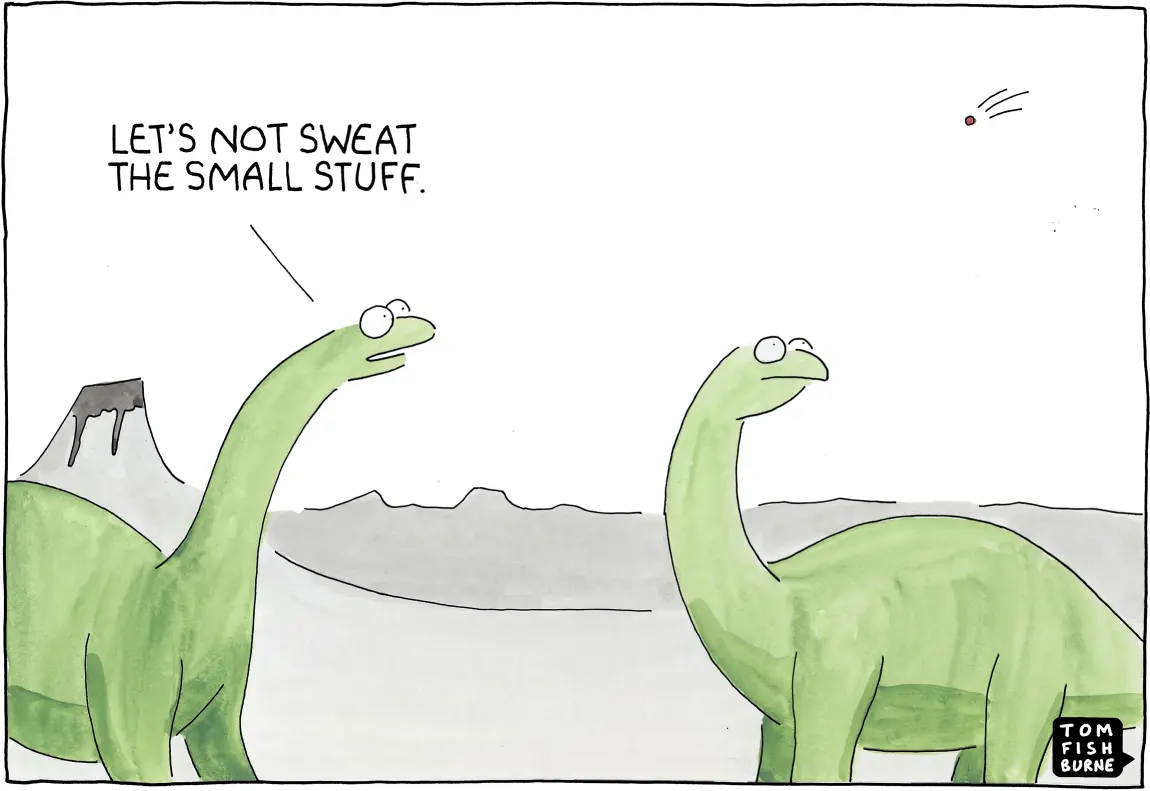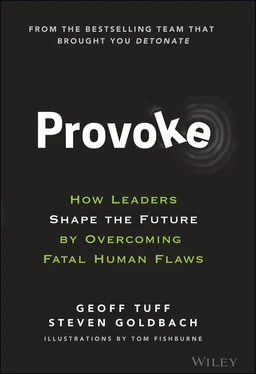Because of the high capital intensity of the communications and entertainment distribution market, players in this industry wanted to win all of these customers. It wasn't economically viable to focus on just one segment, so Steve's work was designed to help companies customize their product, pricing, and marketing messages to better target the needs of each of these groups. For instance, if you had an area that overindexed on owned homes, that was a sign that there were probably a lot of families with kids, and you'd advertise a comprehensive package. If you were targeting an urban area with a lot of apartment renters, you'd make different choices.
None of this was particularly earth-shattering in 2009. The work was solid, but the patterns were generally predictable to experienced executives in the space.
Except for one small anomaly.
A seemingly inconsequential group of customers – that 1.75% that the exec had dismissed – was exhibiting some unique behaviors that made it challenging to assign them to one of the larger segments. When segmenting an industry, it's preferential to get to between four and eight meaningful segments of the marketplace that are small enough to be unique but large enough to merit individual focus. But, from an analytical perspective, the 1.75% just didn't fit into any segment.
These were younger people, so Steve and his team tried to type them to the segment with other single people. But they didn't really fit. They had lower income, so the team tried to group them with the budget-conscious single group, but they didn't pick the lowest-cost Internet. They actually wanted high Internet speeds. They tried to bundle them with the higher-income single people, but those folks didn't buy TV packages. Most of the time they would pick the most basic TV package, and many of them didn't even have a TV package at all. If they could buy “just Internet,” they would – but at high speeds. If their Internet provider required them to also purchase television or phone, they might purchase Internet elsewhere, sometimes getting a cellular hotspot (previously you could just use your mobile phone as a hotspot) instead of a wired home connection.
When Steve and his team further investigated this group and tried to understand whether they were just uninterested in video content, they found the opposite. This cohort of singles was quite interested in video content, but they weren't watching traditional network programming. They watched short-form videos on the then-new YouTube. They watched snippets of online video and they subscribed to the new streaming service offered by Netflix, introduced a year earlier, which had only around 1,000 titles and set a limit of 18 hours of streaming per month, a far cry from the Netflix that has become both a noun and a verb. 1
Intrigued, Steve and his team dug deeper. What they found was that this behavior was rooted in preferences, not cost: this small group simply preferred to consume content in this way. The segment wanted to watch the shows they wanted to watch when they wanted to watch them. They wanted smaller, bite-sized chunks of content. They wanted it ad-free (but, given that they were budget constrained, they would tolerate ads if that helped make it more affordable). And they were pretty agile about finding ways to view their favorite shows online without paying for them, if it could be done.
In short, they consumed content in this way not because it was cheaper but because it was better – although the fact that it was also cheaper made it a zero-trade-off change for consumers.
But the executive wasn't buying it. He seemed more interested in discrediting the research methodology than the findings.

Remind me, how many people were in your study?
How did you weight your sample?
Did you conduct this study nationally or regionally?
Was the survey conducted online or on the phone?
After glancing at his colleague, Steve asked, “Are you curious to learn more about the behavior of this group of customers? It seems as though if the group became more prominent, it would challenge the way you make money.”
It was at that point the executive responded with his why would I care response and arrogantly stuck his hand in his pants.
The behavior of this executive is part of a pattern that we have observed time and time again with leaders of all kinds – and it's one of the core reasons we wrote Provoke . When an anomaly emerges in their space, something that might be important, the vast majority of humans behave in a persistently predictable pattern. It's as if executives are riding that roller-coaster but fail to recognize that they are in fact going up a steep slope that will at some point tip over into the ride of their lives – and not in a good way. The potential of the trend – if it might happen – shifts to when it will happen. Too many executives fail to anticipate that phase change. They:
Miss the trend
Deny the trend
Analyze the trend
Respond meekly to the trend
The first issue that people seem to have is that they don't even see things that are happening under their noses. In the case of the cord-cutting behavior described above, the consulting team might have missed it themselves if there had not already been some reporting of the then-fringe behavior. But they also had the benefit of having a team of young people, many of whom were themselves contemplating cutting the cord because they simply could not understand why anyone would want to pay for something that forced them to watch a show at a scheduled time versus when it was convenient for them.
In general, we miss trends not because we aren't looking, but because our brain processes the raw data of what we see through an unconscious filter of our own experiences. Unless you consciously learn how to turn that filter off, it can be hard to see something right in front of your nose. 2
“1.75%. Why would I care?” The preceding experience with the executive is an example of denial. Denial can take many forms. Steve saw a subtler form of denial, which was to question and discredit the observation. We've seen with other trends (e.g., humans' impact on climate, vaccines) that denial can include just an outright refutation of the findings. But after missing something for a long time, having it pointed out to you frequently sparks a negative response and deniers will dig in. The lesson? People don't like to be shown they have missed something important.
After a period of denial, some will turn to analysis. Executives will start to ask lots of questions about how big it is, how fast it's moving, how many people it will impact. And there are meetings … so many meetings … and all with their requisite PowerPoint decks. We frequently find that some analysis leads to more analysis. The more you look at something, the more you find other ways you could look at it. This is all designed, of course, to give executives more specificity on the problem (or opportunity) their business faces. Rarely do we see meetings that focus on analysis end with a decision to take action in the market; most of the time, the conclusion is that the action required is to go do more analysis.
RESPOND MEEKLY TO THE TREND
Sadly, in the rare cases where we do see executives take action – after an unduly long period of study – it's often too little, too late. Just think about the efforts of brick-and-mortar department stores to respond to the long curve of the online shopping trend. Instead of making deliberate choices to make what we call “minimally viable moves” in the face of early signals, they instead waited for evidence of the trend to hit them in the face and then had market forces dictate their path forward. There's often a theoretical debate in boardrooms about whether to pursue a “first mover” or “fast follower” strategy. Unfortunately, the fast follower position is almost always framed as “wait for someone to be successful in the marketplace to get started .” This is a choice that is increasingly doomed to failure given the degree to which markets are becoming more “winner take all.” And, let's face it, most “fast followers” are really dawdlers. 3
Читать дальше













